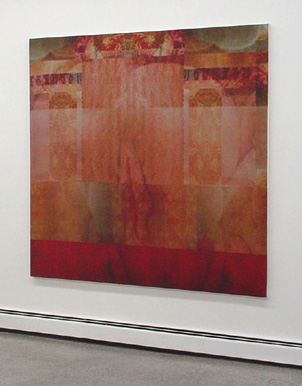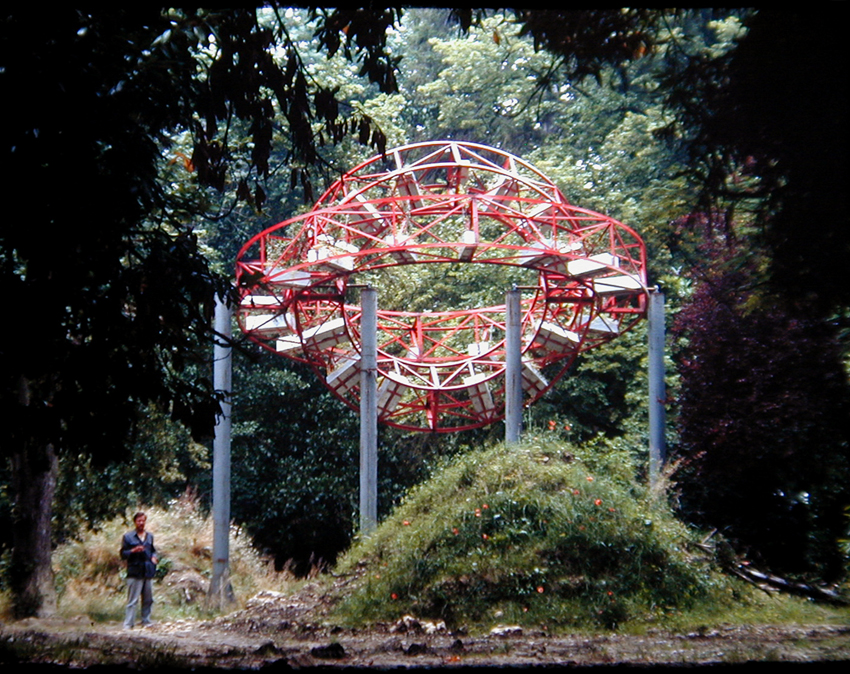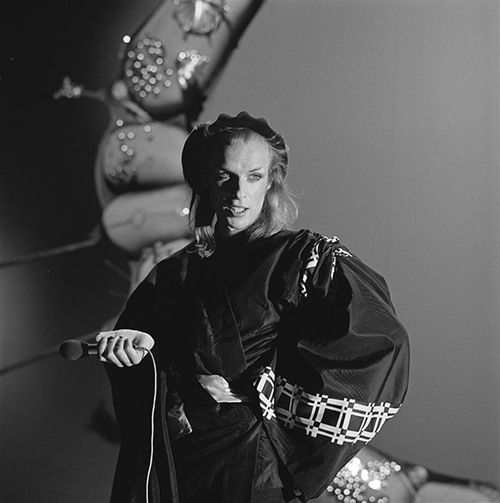|
Generative Music
Generative music is a term popularized by Brian Eno to describe music that is ever-different and changing, and that is created by a system. Historical background In 1995 whilst working with SSEYO's Koan_(program), Koan software (built by Tim Cole and Pete Cole who later evolved it to Noatikl then Wotja), Brian Eno used the term "generative music" to describe any music that is ever-different and changing, created by a system. The term has since gone on to be used to refer to a wide range of music, from entirely random music mixes created by multiple simultaneous CD playback, through to live rule-based computer composition. Koan was SSEYO's first real-time music generation system, developed for the Windows platform. Work on Koan was started in 1990, and the software was first released to the public in 1994. In 1995 Brian Eno started working with SSEYO's Koan Pro software, work which led to the 1996 publication of his title 'Generative Music 1 with SSEYO Koan Software'. Eno's ea ... [...More Info...] [...Related Items...] OR: [Wikipedia] [Google] [Baidu] |
Koan (program)
Koan is a generative music engine created by SSEYO, a company founded by Pete Cole and Tim Cole. The Koan technology is now owned by Intermorphic Limited, co-founded by the Cole brothers in 2007. Architecture and engine The SSEYO Koan Interactive Audio Platform (SKIAP) consisted of the core Koan generative music engine (the SSEYO Koan Generative Music Engine. or SKME), a set of authoring tools (SSEYO Koan Pro and SSEYO Koan X), a set of stand-alone Koan Music players (SSEYO Koan Plus, SSEYO Koan File Player and SSEYO Koan Album Player), and a plug-in for web browsers such as Internet Explorer and Netscape. Development of the Koan engine started in 1990, when SSEYO was founded, and by 1992, the first version entered beta testing. Distributed by Koch Media, the first edition of Koan was publicly released in 1994, followed by the Koan Pro authoring tool in 1995. Later that year, SSEYO brought Koan to the attention of Brian Eno, who quickly showed great interest in the product. He ... [...More Info...] [...Related Items...] OR: [Wikipedia] [Google] [Baidu] |
Mexican International Conference On Artificial Intelligence
The Mexican International Conference on Artificial Intelligence (MICAI) is the name of an annual conference covering all areas of Artificial Intelligence (AI), held in Mexico. The first MICAI conference was held in 2000. The conference is attended every year by about two hundred of AI researchers and PhD students and 500−1000 local graduate students. Overview MICAI is a high-level peer-reviewed international conference covering all areas of Artificial Intelligence. All editions of MICAI have been published in Springer Springer LNAI (N 1793, 2313, 2972, 3789, 4293, 4827, 5317, 5845, 6437–6438). Recent MICAI events (2006, 2007, 2008, 2009, and 2010) received over 300 submissions from over 40 countries each. The conference's scientific program includes keynote lectures, paper presentations, tutorials, panels, posters, and workshops. MICAI is organized by the Mexican Society for Artificial Intelligence (SMIA) in cooperation with various national institutions. Their topics of ... [...More Info...] [...Related Items...] OR: [Wikipedia] [Google] [Baidu] |
Artificial Life
Artificial life (ALife or A-Life) is a field of study wherein researchers examine systems related to natural life, its processes, and its evolution, through the use of simulations with computer models, robotics, and biochemistry. The discipline was named by Christopher Langton, an American computer scientist, in 1986. In 1987, Langton organized the first conference on the field, in Los Alamos, New Mexico. There are three main kinds of alife, named for their approaches: ''soft'', from software; ''hard'', from computer hardware, hardware; and ''wet artificial life, wet'', from biochemistry. Artificial life researchers study traditional biology by trying to recreate aspects of biological phenomena. Overview Artificial life studies the fundamental processes of living systems in artificial environments in order to gain a deeper understanding of the complex information processing that define such systems. These topics are broad, but often include Evolutionary algorithm, evolutionar ... [...More Info...] [...Related Items...] OR: [Wikipedia] [Google] [Baidu] |
Noise Music
Noise music is a genre of music that is characterised by the expressive use of noise. This type of music tends to challenge the distinction that is made in conventional musical practices between musical and non-musical sound. Noise music includes a wide range of music genre, musical styles and sound art, sound-based creative practices that feature noise as a primary aspect of music, aspect. Noise music can feature acoustically or electronically generated noise, and both traditional and unconventional musical instruments. It may incorporate live machine sounds, non-musical Vocals#Vocal technique, vocal techniques, physically manipulated audio media, Sound effect, processed sound recordings, field recording, Computer music, computer-generated noise, stochastic process, and other randomly produced electronic signals such as Distortion (music), distortion, Audio feedback, feedback, Noise (radio), static, hiss and hum. There may also be emphasis on high volume levels and lengthy, cont ... [...More Info...] [...Related Items...] OR: [Wikipedia] [Google] [Baidu] |
Viral SymphOny
viral symphOny is a collaborative electronic noise music symphony created by the postconceptual artist Joseph Nechvatal. It was created between the years 2006 and 2008 using custom artificial life C++ software based on the viral phenomenon model. It is 1 hour and 40 minutes in length. The first movement of ''viral symphOny'' - and raw viral field material - was released in 2006 as a CD by The Institute for Electronic Arts in Alfred, New York. A low resolution extract from the ''pOstmOrtem'' section of ''viral symphOny'' was published in NME (The New Musical Express) magazine. Awards and acknowledgements * January 2009 ''viral symphOny'' was selected by artist/musician James Hoff for inclusion into UbuWeb's ''Top Ten'' * ''viral symphOny'' was chosen as prize winner at the ''9th Festival Internacional de Investigación Artística de Valencia, After The Net'', 5–29 June 2008, Valencia, Spain *''viral symphOny'' was voted #2 in the top ten at ''free103.9 radio'' in 2007 *''SoundLA ... [...More Info...] [...Related Items...] OR: [Wikipedia] [Google] [Baidu] |
Joseph Nechvatal
Joseph Nechvatal (born January 15, 1951) is an American post-conceptual digital artist and art theoretician who creates computer-assisted paintings and computer animations, often using custom computer viruses. Life and work Joseph Nechvatal was born in Chicago. He studied fine art and philosophy at Southern Illinois University Carbondale, Cornell University and Columbia University. He earned a Doctor of Philosophy in Philosophy of Art and Technology at the Planetary Collegium at University of Wales, Newport KM Center for Art and Media Karlsruhe lecture page ''Joseph Nechvatal: Immersion Into Noise'' and has taught [...More Info...] [...Related Items...] OR: [Wikipedia] [Google] [Baidu] |
Generative Art
Generative art is post-conceptual art that has been created (in whole or in part) with the use of an autonomous system. An ''autonomous system'' in this context is generally one that is non-human and can independently determine features of an artwork that would otherwise require decisions made directly by the artist. In some cases the human creator may claim that the Generative systems, generative system represents their own artistic idea, and in others that the system takes on the role of the creator. "Generative art" often refers to algorithmic art (algorithmically determined Computer-generated artwork, computer generated artwork) and synthetic media (general term for any algorithmically generated media), but artists can also make generative art using systems of chemistry, biology, mechanics and robotics, smart materials, manual randomization, mathematics, data mapping, symmetry, and Tessellation, tiling. Generative algorithms, algorithms programmed to produce artistic work ... [...More Info...] [...Related Items...] OR: [Wikipedia] [Google] [Baidu] |
In C
''In C'' is a composition by Terry Riley from 1964. It is one of the most successful works by an American composer and a seminal example of minimal music, minimalism. The score directs any number of musicians to repeat a series of 53 melodic fragments in a guided improvisation. Terry Riley's 1968 recording of ''In C'' was added to the National Recording Registry in 2022. The piece inspired countless other composers, including Philip Glass, Steve Reich, John Adams (composer), John Adams, and Julius Eastman. Composition Alongside fellow students Loren Rush and Pauline Oliveros, Terry Riley had been involved with group improvisation since 1957–8. The immediate forerunner for the piece was the incidental music Riley wrote for Ken Dewey's play ''The Gift''. It was being performed in Paris in 1963 when Riley was asked to provide music for it. He ran into Chet Baker and recorded his quartet performing songs that included Miles Davis' "So What (Miles Davis composition), So What". Ril ... [...More Info...] [...Related Items...] OR: [Wikipedia] [Google] [Baidu] |
Terry Riley
Terrence Mitchell Riley (born June 24, 1935) is an American composer and performing musician best known as a pioneer of the minimalist music, minimalist school of composition. Influenced by jazz and Indian classical music, his work became notable for its innovative use of Repetition (music), repetition, tape music techniques, musical improvisation, improvisation, and delay (audio effect), delay systems. His best known works are the 1964 composition ''In C'' and the 1969 album ''A Rainbow in Curved Air'', both considered landmarks of minimalism and important influences on experimental music, rock music, rock, and contemporary electronic music. Subsequent works such as ''Shri Camel'' (1980) explored just intonation. Raised in Redding, California, Riley began studying music composition, composition and performing solo piano in the 1950s. He befriended and collaborated with composer La Monte Young, and later became involved with both the San Francisco Tape Music Center and Young's N ... [...More Info...] [...Related Items...] OR: [Wikipedia] [Google] [Baidu] |
It's Gonna Rain
''It's Gonna Rain'' is a tape composition written by American composer Steve Reich in 1965. It lasts about 18 minutes. It was Reich's first major work and is considered a landmark in minimalism and process music. Analysis Around 1964, influenced by his work with Terry Riley on the composition ''In C'' and Riley's use of tape looping and delay systems, Reich started experimenting with these techniques as well. Up until January 1968, the full title of ''It's Gonna Rain'' was ''It's Gonna Rain, or meet Brother Walter in Union Square after listening to Terry Riley''. The source material of ''It's Gonna Rain'' consists entirely of a tape recording made in 1964 at San Francisco's Union Square. In the recording, a Pentecostal preacher, Brother Walter, rails about the end of the world, while accompanying background noises, including the sound of a pigeon taking flight, are heard. The piece opens with the story of Noah, and the phrase "It's Gonna Rain" is repeated and eventually loo ... [...More Info...] [...Related Items...] OR: [Wikipedia] [Google] [Baidu] |
Brian Eno
Brian Peter George Jean-Baptiste de la Salle Eno (, born 15 May 1948), also mononymously known as Eno, is an English musician, songwriter, record producer, visual artist, and activist. He is best known for his pioneering contributions to ambient music and electronica, and for producing, recording, and writing works in rock music, rock and pop music. A self-described "non-musician", Eno has helped introduce unconventional concepts and approaches to contemporary music. He has been described as one of popular music's most influential and innovative figures. In 2019, he was inducted into the Rock and Roll Hall of Fame as a member of Roxy Music. Born in Suffolk, Eno studied painting and experimental music at the art school of Ipswich Civic College in the mid-1960s, and then at Winchester School of Art. He joined the glam rock group Roxy Music as its synthesiser player in 1971 and recorded two albums with them before departing in 1973. He then released solo albums, beginning with ''He ... [...More Info...] [...Related Items...] OR: [Wikipedia] [Google] [Baidu] |






